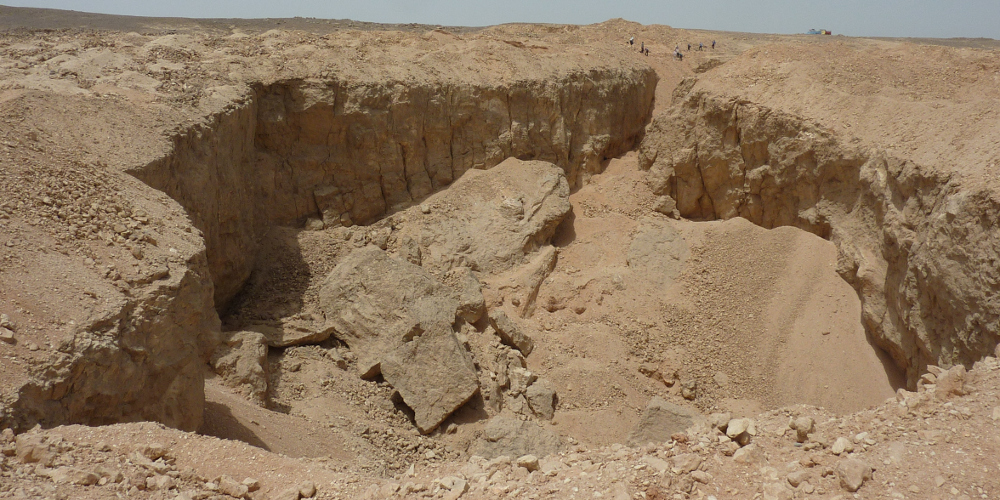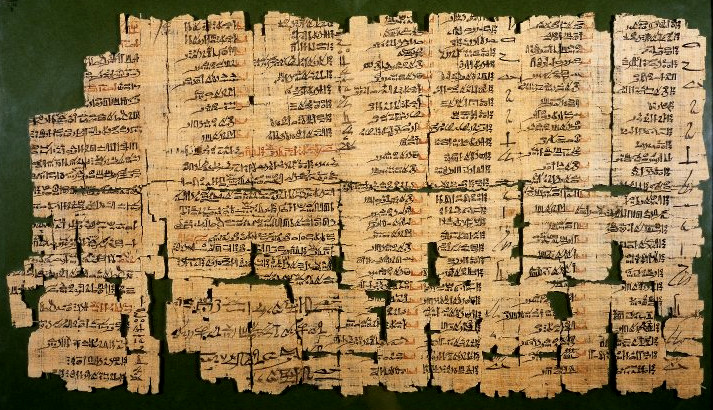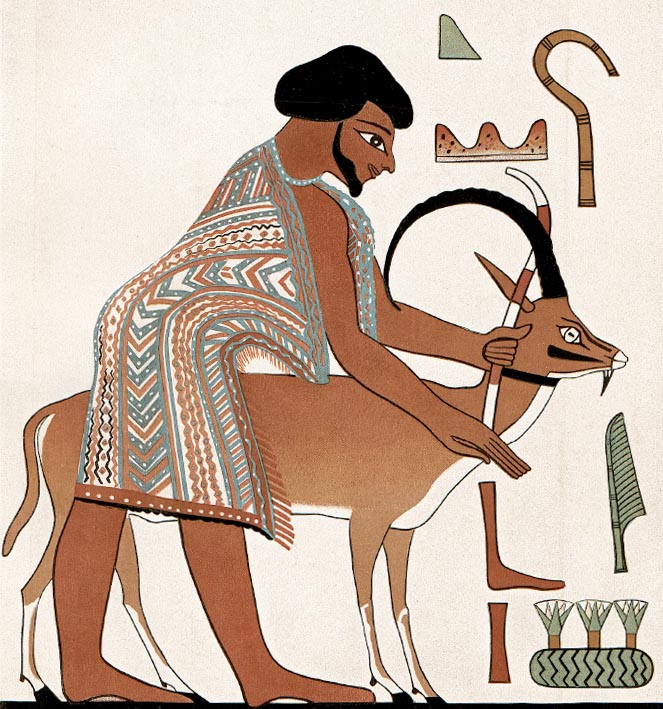The Egyptians believed that dreams could foretell the future. And as such the interpretation of dreams played an important part of ancient Egyptian culture. In fact, the interpretation of dream persists among modern Egyptians today.
The Dream Book
Two so-called “dream books” have survived from ancient Egypt. Perhaps the most interesting is Papyrus Chester Beatty III, a fragmentary papyrus written in hieratic. This papyrus is a catalog of dreams and their interpretations.
The format of the interpretations is quite formulaic. All the dreams are predicated upon you appearing your dream. The dream is then summarized. The book then gives a one-word appraisal of the dream, either “good” or “bad.” And then the book predicts what’s going to happen to you.
A couple of examples from the dream book are as follows: “[if a man sees himself in a dream] seeing the god who is above–good; it means much food.” Or, “[…] seeing himself [in] mourning–good; the increase of his possessions.” Or, “[…] looking in a deep well–bad; his being put into prison.” Or, “[…] seeing an ostrich–bad; harm befalling him.”
The content of these dreams were not limited by propriety or societal mores. Dream books provided interpretations for dreams involving drinking wine, engorged genitals, and copulating with one’s mother. Also, some of these dreams could be quite cringe worthy, such as, drinking one’s own urine or blood, or copulating with a pig. Counter-intuitively, the dream books considered some of these noxious dreams to have good outcomes.
Joseph and Dream Interpretation
One cannot refer to dream books without being reminded of the dream interpretations found in the Bible, most notably those interpretations done by Joseph. Joseph was sent to prison where he interpreted the dreams of his fellow prisoners. Joseph interpreted the dream of a cupbearer:
So the chief cupbearer told his dream to Joseph, and said to him, “In my dream, behold, there was a vine in front of me; and on the vine were three branches. And as it was budding, its blossoms came out, and its clusters produced ripe grapes. Now Pharaoh’s cup was in my hand; so I took the grapes and squeezed them into Pharaoh’s cup, and I put the cup into Pharaoh’s hand.” Then Joseph said to him, “This is the interpretation of it: the three branches are three days; within three more days Pharaoh will lift up your head and restore you to your office; and you will put Pharaoh’s cup into his hand according to your former custom when you were his cupbearer. [Gen 40:9-13]
The Chester Beatty papyrus has a similar dream. “[…] seeing himself with one greater than he–good; it means his promotion by his (own) agency.” The cupbearer saw himself serving the king, so a promotion or restoration of position was the expected interpretation.
Pharaoh’s Dream and the Dream Book
The cupbearer remembered Joseph as an interpreter of dreams and suggested to the king that Joseph could interpret his dream. Joseph interpreted the king’s dream as foretelling seven years of plenty followed by seven years of famine. The king described his dream as follows:
Now it happened at the end of two full years that Pharaoh had a dream, and behold, he was standing by the Nile. And lo, from the Nile there came up seven cows, sleek and fat; and they grazed in the marsh grass. Then behold, seven other cows came up after them from the Nile, ugly and gaunt, and they stood by the other cows on the bank of the Nile. The ugly and gaunt cows ate up the seven sleek and fat cows. Then Pharaoh awoke. He fell asleep and dreamed a second time; and behold, seven ears of grain came up on a single stalk, plump and good. Then behold, seven ears, thin and scorched by the east wind, sprouted up after them. The thin ears swallowed up the seven plump and full ears. Then Pharaoh awoke, and behold, it was a dream. [Gen 41:1-8]
The Chester Beatty papyrus has some favorable interpretations that reference bovines. “[…] seeing a dead ox–good; it means seeing [the demise?] of his enemies.” “[…] killing an ox–good; killing his enemies.” “[…] carving up an ox with his (own) hand–good; killing his (own) adversary.” And, “[…] bringing in the cattle–good; the assembling of people for him by his god.”
But there are also some unfavorable interpretations. “[…] feeding cattle–bad; it means roaming the earth.”
Grain is also referenced. “[…] seeing barley and spelt [given?] to those yonder–good; it means the protection of him by his god.” “[…] measuring barley–bad; it means the arising of words with him.”
Likewise, dreams provided predictions for harvests. “[…] seeing a large cat–good; it means a large harvest will come to him.”
What can we make of Dream Interpretations?
Although the Chester Beatty papyrus is far from complete, we can see that the interpretation of dreams was codified knowledge. A lot of questions remain regarding how the ancient Egyptians interpreted dreams. How did the Egyptians interpret more complex dreams? How extensive were these dream books? Did the Egyptians standardize dream books? How many editions were in circulation? Fortunately, the Chester Beatty papyrus gives us a tantalizing start to this fascinating subject.


